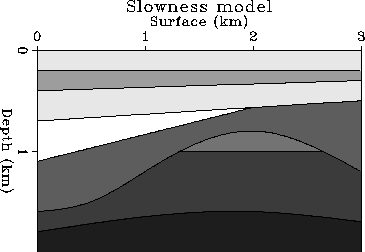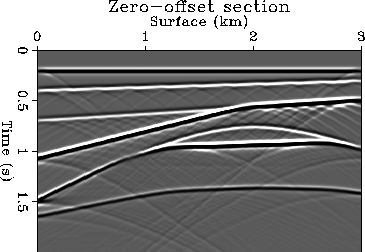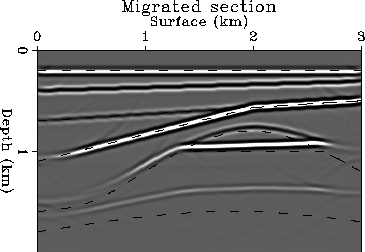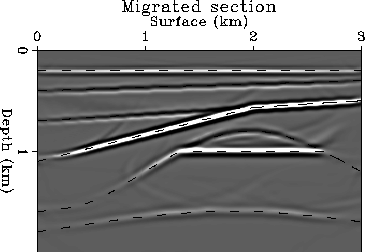




Next: ACKNOWLEDGMENTS
Up: Zhang: Residual depth migration
Previous: EXAMPLES
I have presented an efficient algorithm for residual depth migration in
general variable-slowness models. The algorithm consists of two steps: (1)
calculating the operators with a finite-difference method, (2) applying
the calculated operators to the migrated image. This algorithm is generally
applicable to both post-stack and
pre-stack migration, and to both common shot and constant offset geometry.
I have used a synthetic example of residual depth migration of a post-stack
image to demonstrate the accuracy of the algorithm. Further experiments are
necessary to determine how efficient the residual migration is in comparison
to full migration.
sintl
Figure 1 Synthetic slowness model. High intensities denote high velocities
or low slowness. The solid curves indicate the boundaries of layers.
 sycosdat
sycosdat
Figure 2 Synthetic zero-offset section generated from the slowness model in
Figure 1.
 sycosimg0
sycosimg0
Figure 3 Image migrated with a constant slowness. The dashed curves shows the true
positions of the reflectors
 sycosrmg
sycosrmg
Figure 4 Image after residual depth migration. The dashed curves shows the true positions
of the reflectors.






Next: ACKNOWLEDGMENTS
Up: Zhang: Residual depth migration
Previous: EXAMPLES
Stanford Exploration Project
12/18/1997




